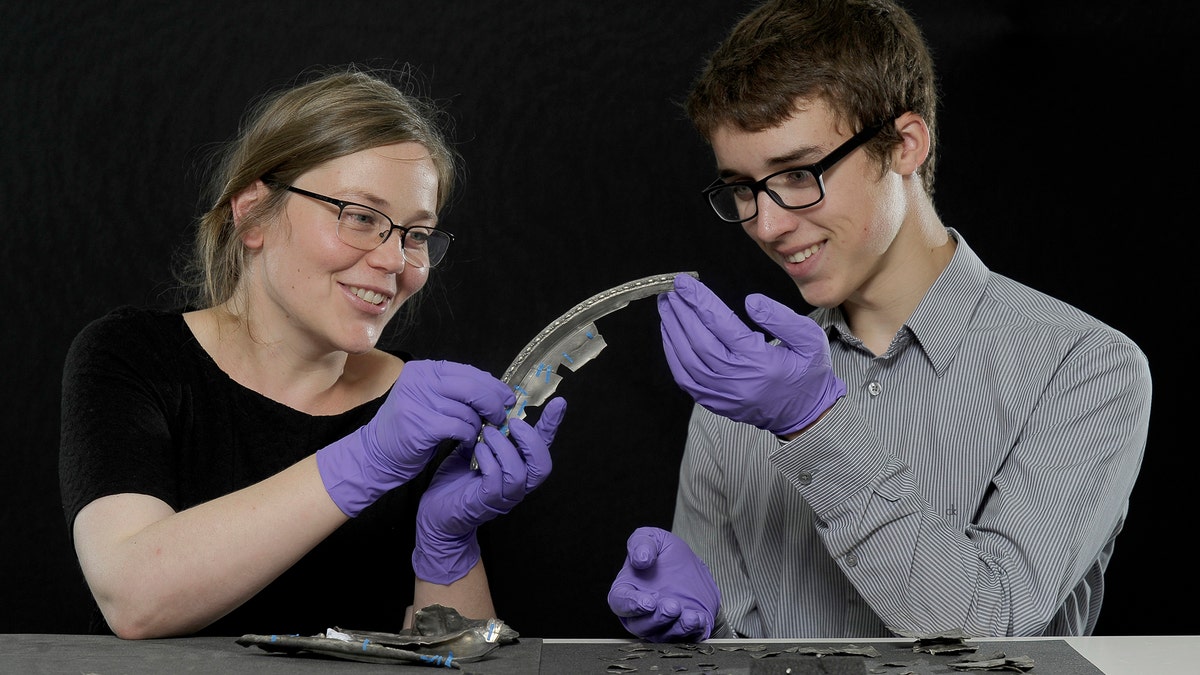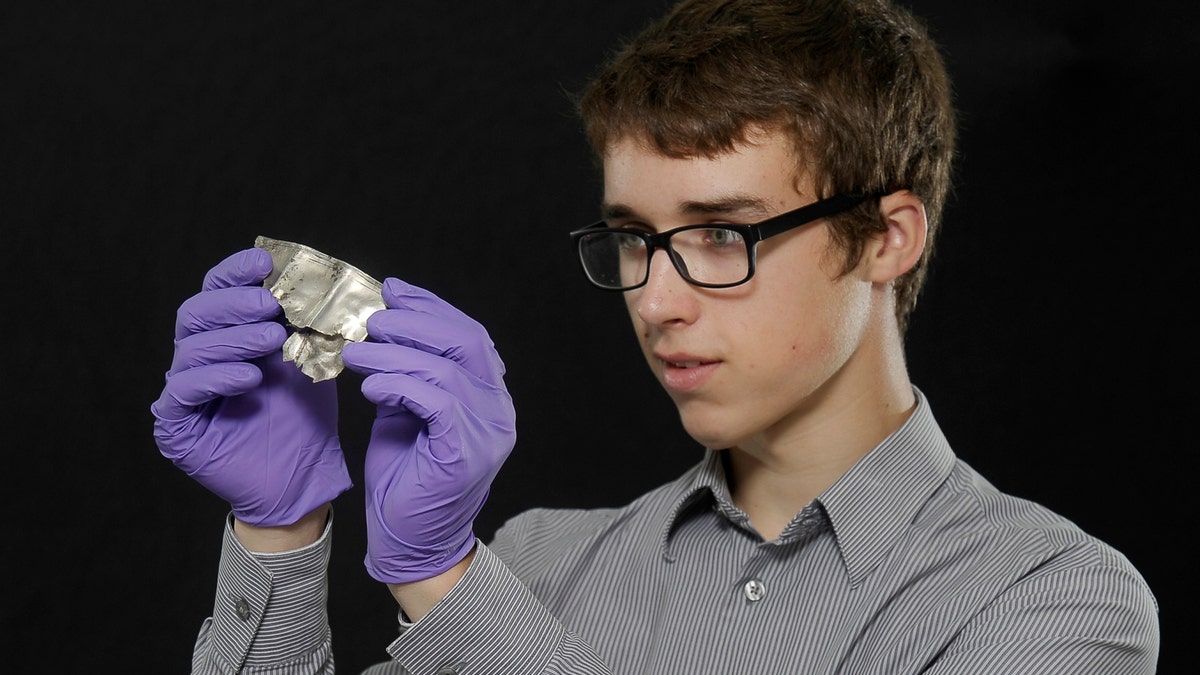
David Hall and Alice Blackwell, Glenmorangie Research Fellow at National Museums Scotland, examine a silver fragment. (Neil Hanna)
A stunning hoard of ancient silver, believed to have been used as bribes by Romans, was found with a metal detector by a teenager in Scotland.
The silver fragments were found in Dairsie, in the Scottish region of Fife, by David Hall in 2014. Hall was just 14 years old at the time of the find. In October, the trove will go on show for the first time at the National Museum of Scotland in Edinburgh.
Over 200 silver fragments were unearthed on the day of Hall’s find and another 200 fragments were subsequently found at the Dairsie site.
RARE ROMAN COIN DISCOVERED ON REMOTE SCOTTISH ISLAND
The silver fragments, which date from the late 3rd century A.D., are known as “hacksilver” because they were hacked from larger objects and converted into a form of raw silver bullion. The discovery is particularly noteworthy given Dairsie’s location beyond the Northern frontier of the ancient Roman Empire.

1st time free use- No sales, syndication or archive Metal detectorist David Hall, 16, examines a fragment of the Dairsie Hoard, a hoard of Roman era silver he unearthed in Fife. The hoard, which dates to the 3rd century AD, is currently being conserved and analysed before it goes on display from October in an exhibition, ScotlandÕs Early Silver, at the National Museum of Scotland in Edinburgh. It is the earliest recorded example of ÔhacksilverÕ, objects literally hacked into pieces, converted from beautiful treasures into raw silver bullion. Archaeologists think this silver came to Fife as a gift or payment from the Roman world. The Romans could not just rely on the strength of their army Ð they also used diplomatic efforts to secure the empireÕs borders by buying off surrounding tribes. Neil Hanna Photography www.neilhannaphotography.co.uk 07702 246823 (Neil Hanna)
“When the hoard was buried in the later third century AD, Scotland was outside the Roman world,” explained Dr. Fraser Hunter, principal curator of Iron Age and Roman collections at the National Museum of Scotland, in a blog post. “But the Romans still maintained an interest in the area. A century earlier they’d been sending silver coins into Scotland as a form of bribery.”
Hunter notes that sending silver coins across the empire’s border was a form of “frontier diplomacy” as the Romans attempted to maintain peace with the tribes on the edge of their world. The policy, however, was thought to have ended in the early third century A.D.
TROVE OF ANCIENT ROMAN LETTERS UNEARTHED NEAR HADRIAN’S WALL
“This Fife find rewrites the story,” Hunter explained. “It shows there were continuing attempts to keep the northern tribes sweet.” The silver may have been targeted at the Picts, warlike tribal groups that were emerging in Eastern Scotland at the time. “It’s rewriting our view of Roman frontier politics,” Hunter added.

Neil Hanna Photography www.neilhannaphotography.co.uk 07702 246823 (Neil Hanna)
Piecing together the Dairsie find is no easy task for archaeologists. The field where the fragments were found had been ploughed, further adding to the complexity of the discovery.
“Our curatorial jigsaw puzzle is to put it back into the form before it was ploughed, but after it had been cut up by the Romans,” a spokesman for the National Museum of Scotland, told Fox News. “That is what is being done right now.”
ROMAN COINS DISCOVERED IN RUINS OF JAPANESE CASTLE
Experts have already worked out that the fragments came from a dish, a bowl, a beautifully decorated beaker and a rolled-up silver cylinder. “The beaker was buried intact, but the rest had been cut up into pieces and folded or rolled into packages,” wrote Hunter.
The find will go on display as part of the museum’s “Scotland’s Early Silver” exhibition, which runs from Oct. 13, 2017 to Feb. 25, 2018.
Hall has received an undisclosed fee for his find.
A host of fascinating Roman artifacts have been unearthed in the U.K. recently, including the discovery of a rare Roman coin on a remote island in the Scottish Orkney archipelago.
In June, researchers found 25 wooden ink documents at the Roman fort of Vindolanda just south of Hadrian’s Wall in Northern England, offering a fascinating glimpse into everyday life in the Roman Empire.
This story has been updated with information on the fee paid to Hall.
Follow James Rogers on Twitter @jamesjrogers
